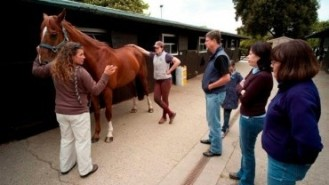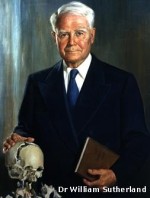ECS Origins
ECS was adapted to the Equine industry during the mid / late 1990's by Maureen Rogers.
Maureen continues to pioneer this amazing therapy the world over; treating horses, and teaching the techniques of ECS to Trainers, Veterinarians,
Equine Dentists, Physiotherapists,
and horse owners. Photograph © Giles Penfound – with thanks.
(Pictured here teaching students when visiting Sharon Hunt's yard
during one of her Equine CranioSacral Workshops)
Her incredible journey began when a snowboarding accident
left her with severe whiplash, and she experienced the benefits
of Craniosacral work at first hand.
This inspired her to go on to become a licensed Human Massage and Craniosacral Therapist herself; practicing for several years, before a friend suggested combining the two things she loved ... Horses and her work - Equine CranioSacral was founded! Since then, thousand of horses and ponies worldwide have benefited....
and so will countless more in the future - thanks to Maureen.
Originally known as Craniosteopathy back in the early 1900's, Craniosacral evolved from the practice of Osteopathy when Dr William Sutherland, an Osteopath, discovered that the bones of the Cranium connect to the bones of the Sacrum through what he referred to as the Core Link. consisting of the Skull, or Cranium, the Spinal Cord together with its protective sleeve called the Dura Mater, and finally the Sacrum.
He further observed that when pressures were applied to the various parts of the head (Skull) - the Sacrum and Pelvis were affected via the resultant Cranial Wave; the same principle applied when light pressures were applied to the Sacrum, and then the bones of the Skull were affected also by the Cranial Wave.
These structures are connected by Muscles, Facia (tissue that weaves the whole body together like a spider's web). Ligaments, and Tendons on the outside, but also very
importantly, by the Tissues from inside the Core Link.
Whilst traditional Osteopathy focuses on the bones themselves, Craniosacral focuses on bringing balance throughout the skeletal and muscular systems; with specific focus
on the individual bones of the Skull, Spine, and Sacrum.





